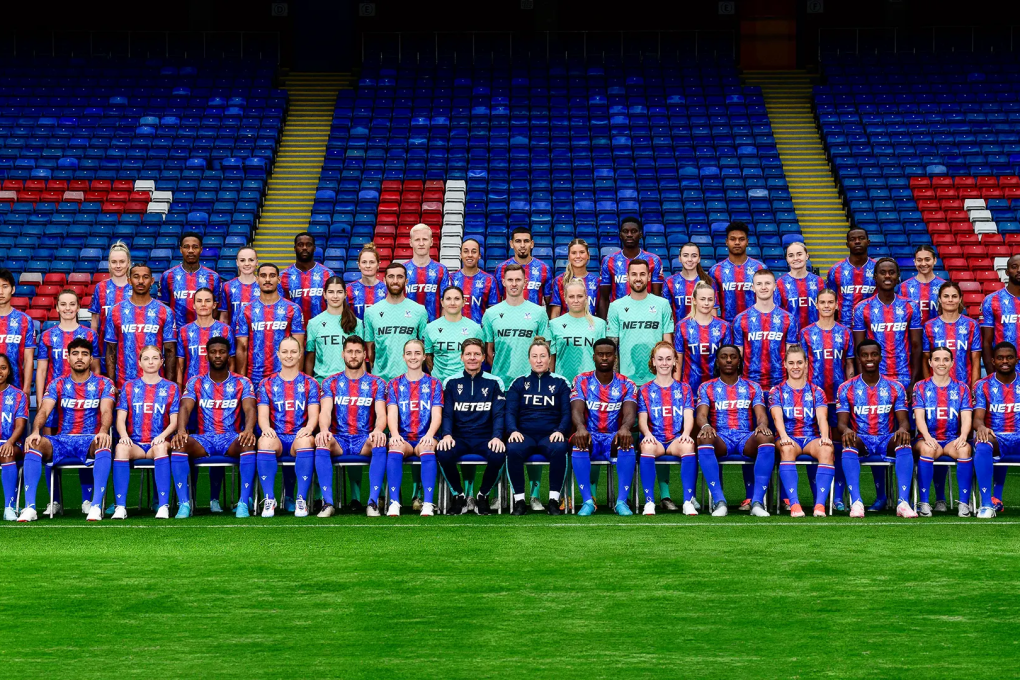
Football is built on passion, tradition, and unforgettable moments. Few clubs in world football can have such a competitive spirit as Crystal Palace. From its beginning in Crystal Palace Park to Selhurst Park, the club has its place in the history of English football. Their journey is amazing—full of victories, heartbreak, and a beautiful connection between the club and the Palace fans.
The club already faced financial difficulties, multiple relegations, and was almost extinct. Along the journey, the club produced legendary Crystal Palace players, competed in multiple FA Cup finals, and exceeded the expectations of even the most passionate fans. The Eagles may not be the most successful club in England, but they have a history that is impossible to forget.
Come with me and let’s take a deep dive into the history of the club, from its formation in 1905 to the top flight of English football. We will see iconic matches, giant moments and about its entire history. If you love football and this club, you are in the right place!
Table of Contents
- History of Crystal Palace
- Origins of Crystal Palace Football Club and Crystal Palace Company
- Building a Football Identity
- War Years and Football League
- Post-War Recovery and Climbing the Leagues (1940s – 1960s)
- Financial Problems and Rebuilding (1980s and 1990s)
- Survival in the 2000s
- Modern Era: Stability and Growth (2010 – Present)
- Legacy of Crystal Palace FC
- Overcome All Challenges with FootballTeam
Origins of Crystal Palace Football Club and Crystal Palace Company
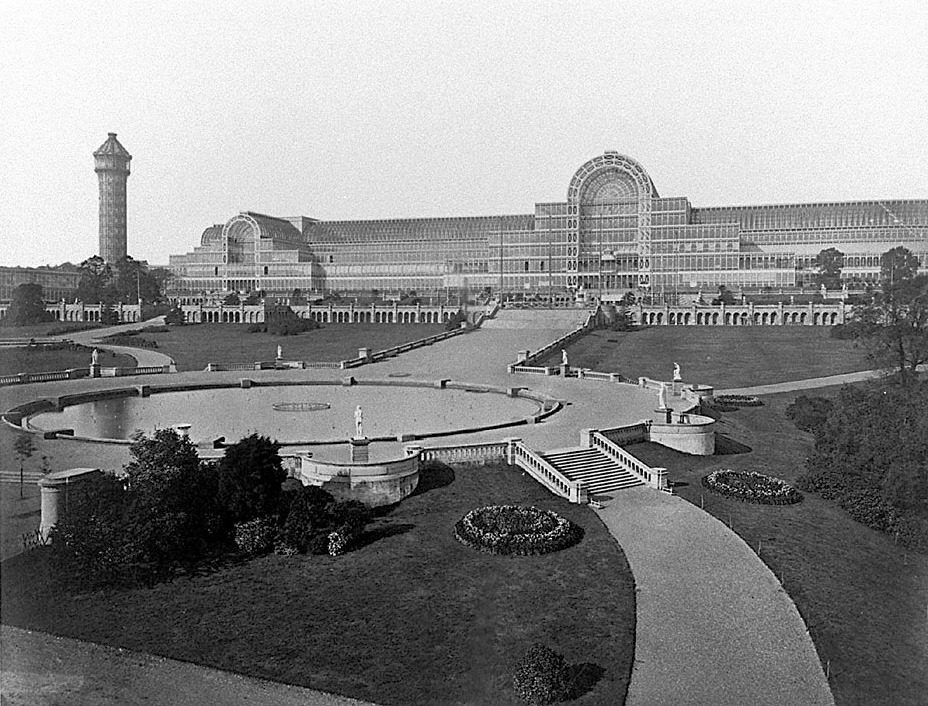
Crystal Palace Football Club is connected with the famous Crystal Palace Company and the Crystal Palace Park in South London. The original Crystal Palace was an exhibition hall made of glass and iron, built for the Great Exhibition of 1851 in Hyde Park. After the exhibition finished, the structure was moved to Sydenham in 1854, where the structure became a cultural and sporting hub. This building, something that few people know, gave the club’s name.
Crystal Palace Park, a historically significant venue in English football, has been home to football matches since the 1860s. The Football Association (FA) recognized the ground’s importance by hosting FA Cup finals there from 1895 to 1914. The grounds were a popular destination for football enthusiasts, attracting numerous amateur and professional teams from across the country.
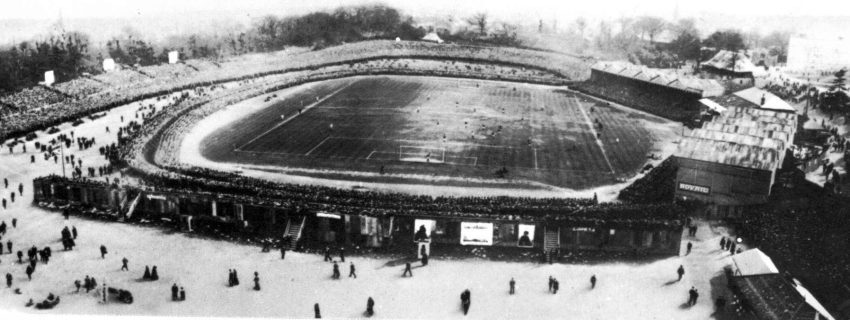
The roots of Crystal Palace started with a cricket club formed in 1857 by employees of the Crystal Palace Company. This amateur club was one of the first sporting organizations in England, and its members were involved in developing football. The employees had a plan to develop a football club and make it powerful, since the popularity of the sport was increasing at the end of the 19th century.
In 1905, the club emerged, and Crystal Palace Football Club was officially founded as a professional outfit. The Crystal Palace club joined the Southern League First Division, beginning its journey in English football. The first team played its home matches at Crystal Palace Park, sharing the grounds with the FA Cup finals, which were held in the stadium until World War I forced the finals to change places. The ground was located inside the Palace Crest.
Building a Football Identity
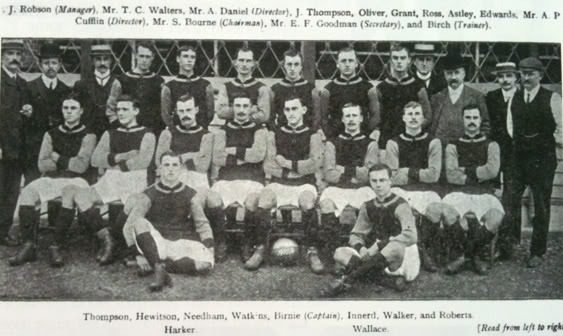
In its first season, the club already showed ambition. Managed by club secretary and its first manager, Jack Robson, Palace built a competitive squad for the Football League. The club had a positive impact in the Southern League Second Division, a regional competition, and became a very popular team in the region.
The first professional match of the club was on September 2, 1905, against Southampton, a more structured team at the time. Palace impressed its fans until the first half, securing a 3-0 victory over Southampton. In the second half, the team didn’t play well and took the turn, losing 4-3.
Despite the defeat, Crystal Palace finished the championship as champions in the Southern League Second Division and was promoted to the Southern League First Division. The rise of the club drew attention to talented players for its squad, including former Football League professionals looking for new challenges.
The club reached the Southern League First Division but disappointed its fans in the inaugural season, coming in nineteenth place. Even with this campaign below expectations, the club showed growth and was invited to participate in the FA Cup, one of the most prestigious competitions in England at the time.
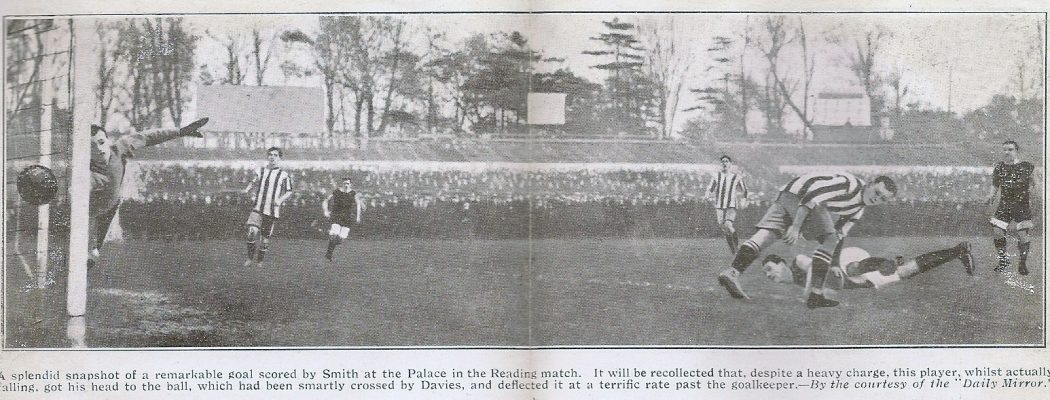
In the 1906/07 season, the club participated in the FA Cup and surprised all its fans. The club won its first game against Newcastle United, one of the best teams in the country at the time. Crystal Palace defeated Newcastle United 1-0, showing that the team could compete with the biggest teams in England and, more than that, it could beat them.
The club almost reached the FA Cup semi-final for the first time in the club’s history, but they lost to Everton in the quarter-finals by 4-0.
These recent achievements began to shape the club’s identity and colors. Initially, Palace wore white shirts and blue shorts, almost the same as the Crystal Palace Cricket Club. However, once the club was established, it adopted claret and blue colors inspired by Aston Villa. These colors would later evolve into red and blue stripes, giving the club its modern look.
As the First World War came, football across England faced a moment of uncertainty. Crystal Palace FC and many clubs in England paused their championships due to the war. Players of all teams were called up to serve in the military services.
Despite the challenges, the club has a history of many achievements and joys for its fans. And soon, it will have an even longer journey in English football.
War Years and Football League
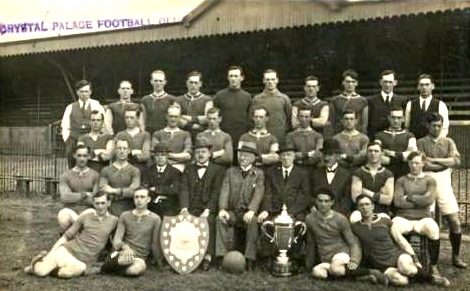
The First World War (1914-1918) had a giant impact on football across England and other countries in Europe. The war forced almost all official competitions to be suspended, and many Palace players joined the military services. Two players, Ginger Willians and Joe Bulcock, were killed in the conflict. When football resumed in 1919, clubs across Europe faced financial and structural struggles, but Palace remained strong, and this determination was important for its growth.
In 1920, the club left the Southern League and became a founding member of a new championship, the Football League Third Division. The club needed this change, with a better football structure, Crystal Palace FC could compete for promotion and reach higher divisions.
The club had an impact in its first season, becoming champion in the Football League Third Division, winning the third division title in the 1920/21 season, and securing a new promotion to the Second Division.
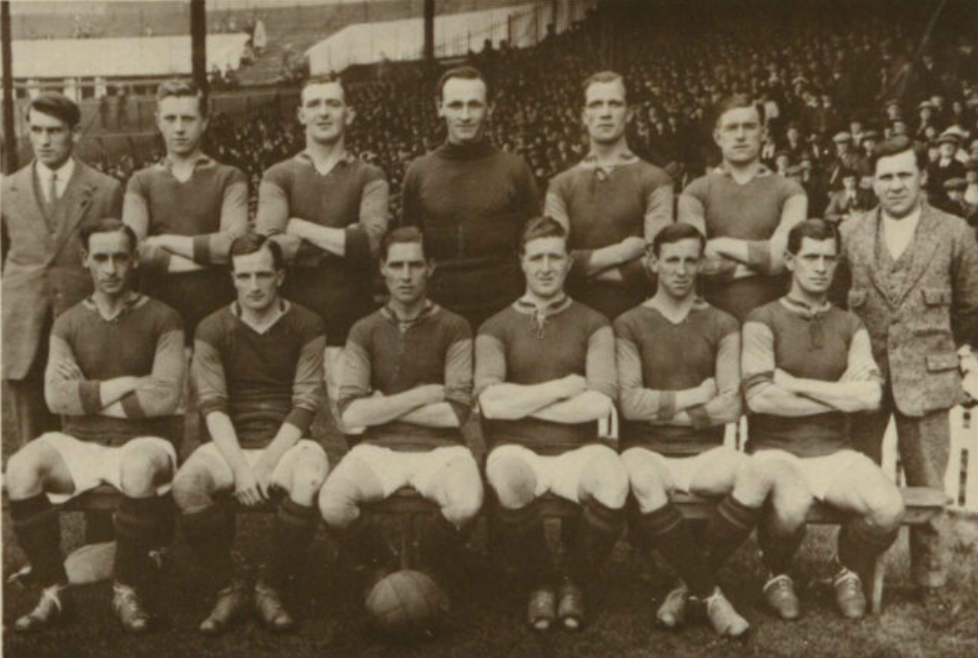
The first season of Crystal Palace in the Football League Second Division, in the 1921/22 season, was harder than they thought it would be. Other teams played well in the competition, and despite good performances, the club ended in fourteenth place, a few points from the relegation zone.
They finished mid-table in their first few seasons, and the club even fought for a few seasons, but in the 1924/25 season, Crystal Palace reached the twenty-first place, within the relegation zone, returning once again to the Football League South, the third tier of English football.
Stadium Challenges and Selhurst Park
Throughout the 1920s, Crystal Palace faced some problems in using their home ground. The Crystal Palace Park stadium, which was their home since its foundation, was still being used for the FA Cup finals. This was a problem for the club because the finals were limiting the control of the club over the venue.
To make matters worse, the region’s authorities didn’t like this division of the ground. A stadium that hosted the finals of one of the most important championships in England couldn’t be used often by a club.
In 1915, the club was forced to leave its stadium and began sharing grounds with other clubs in South London, such as The Nest. This period was troubled and negatively impacted the club’s finances and performance. Soon, it became clear that if the club wanted to be successful, it needed its own stadium.
Finally, in 1922, after years of searching and problems, the club acquired a new site in the Selhurst area of South London. The club began the construction of its new stadium, which was designed by a Scottish architect, Archibald Leitch.
The first match at Selhurst Park took place on August 30, 1924, before the stadium was completed. Crystal Palace was defeated by Sheffield Wednesday Football Club 1-0 in front of a crowd of over 25,000 fans. Billy Marsden scored the only goal of the match.
Struggles in the Second Division and Relegation
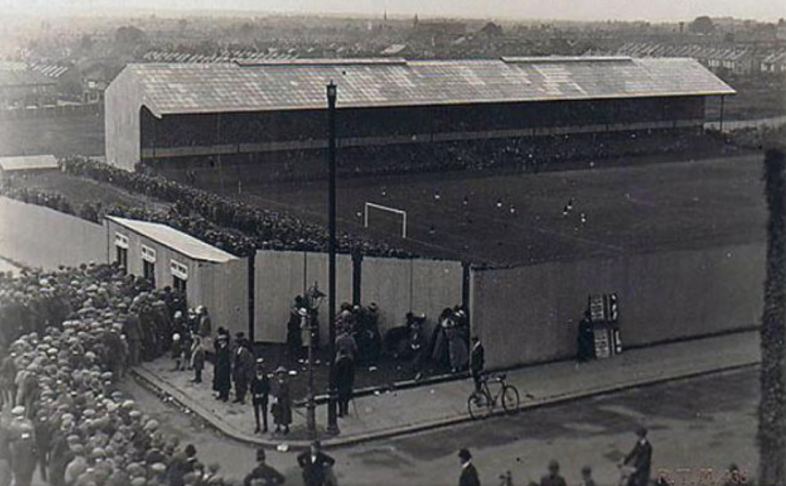
Despite the initial enthusiasm surrounding the move to Selhurst Park, the late 1920s and early 1930s proved to be a challenging period for Crystal Palace FC. The club’s financial limitations made it difficult to compete with wealthier Second Division teams for top talent. As a result, key players departed for more successful clubs, and the team’s performance declined.
In 1925, already in the Southern League Third Division, the club faced a heap of problems. At the end of the 1920s, the club even reached second place, but wasn’t promoted to the Second Division. Thus, entering a period of turbulence and always fighting against relegation until World War II.
Identity and Fan Culture
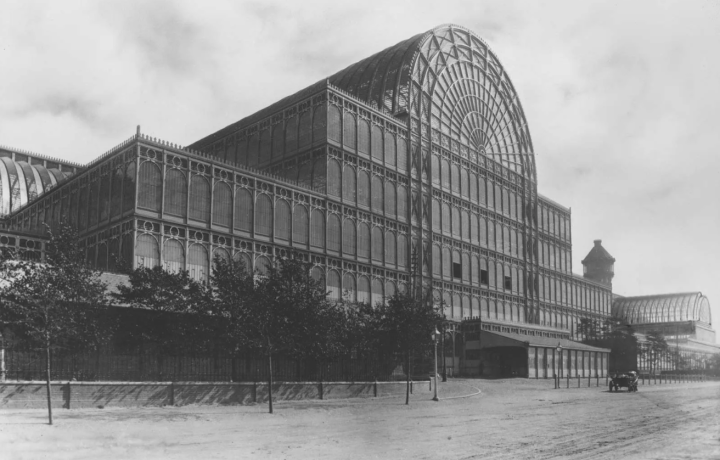
Even with this turbulent period, Crystal Palace FC started the journey to establish the club identity. The team’s nickname, “The Glaziers”, was a tribute to their connection with the Crystal Palace exhibition building. In addition, the club evolved its new colors, using the red and sky blue seen in their kits to this day.
The 1930s were important for one stand, Holmesdale Terrace, at Selhurst Stadium. This stand is where the most passionate club fans and supporters are. They sing and support the team throughout the match.
Preparing for Another War
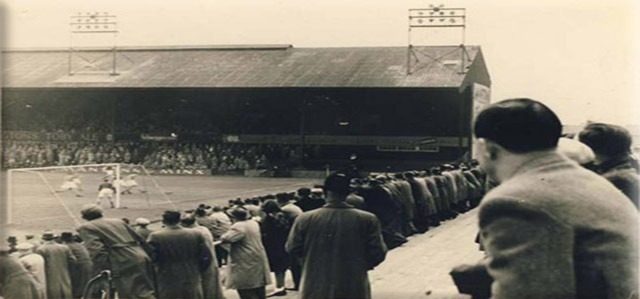
The Second World War was approaching in the late 1930s, and Crystal Palace was still fighting in the Southern League Third Division. However, just like in 1914, football would be interrupted again. With the war starting in 1939, football and other sports stopped indefinitely, causing the Palace’s dream of going up the division to be postponed.
The club faced the war with some uncertainty, but with its loyal supporters and a new stadium, the challenges would only be small obstacles. The club also participated in some regional competitions to stay in shape. With football returning in the mid-1940s, the Palace would once again fight to be promoted to the second division, starting a new chapter in its history.
Post-War Recovery and Climbing the Leagues (1940s – 1960s)
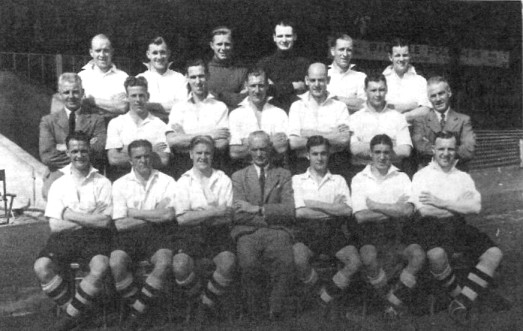
When professional football returned in 1946, after the war ended, Crystal Palace was still in the Third Division South. The club faced poor performances on the pitch and struggled to rebuild its squad. Palace almost always finished its campaigns in mid-table positions, having serious problems qualifying for new divisions.
Some problems reappeared, such as financial limitations, which prevented the club from attracting better players to its squad. Some teams still benefited from post-war investments, which didn’t happen with the Palace. So, the club needed to find young talents within its youth academy or hire players from lower divisions.
Heartbreak and Promotion to Second Division
The club went through its most difficult moment in its history in the 1957/58 season, when it was relegated to the fourth division of English football. There, Crystal Palace spent four seasons fighting to return to the third division.
The club experienced a turnaround in 1961 with the appointment of Arthur Rowe, the former Tottenham Hotspur manager, as their new boss. In the 1960/61 season, under Rowe’s leadership, the club finally achieved promotion from the Fourth Division to the Third Division.
Taking advantage of its new rise, the club appointed Dick Graham as its new coach. In his first season, he finished with the team in eleventh position. The following season, redemption came. The club tied on points with Coventry City, but was behind by the goals average, coming in second place but qualifying again for the Second Division.
Palace won this hard period, and Crystal Palace FC was now just one step away from the top flight of English football. Fans started to believe that the First Division was possible, and the club was looking to achieve this feat for its passionate fans.
Searching for the First Division (Late 1960s)
The final journey to the top flight came under a new manager, Bert Head, who was appointed in 1966. He built a solid team, mixing great talented players and promoted young players from the youth academy, blending experience with new breath.
In the 1968/69 season, the best campaign of Crystal Palace happened, the club ended the Second Division in second place, behind Derby County. But Crystal Palace reached the promotion to the First Division of English football for the first time in its league history.
The achievement was historic – after decades of struggles, stadium changes, relegations, and financial difficulties, Crystal Palace FC reached its biggest dream: the elite of English football. The desire to play among the best teams in the country has come true, and the club didn’t want to disappoint its fans.
First Division and Relegation Battles (1969 – 1980s)
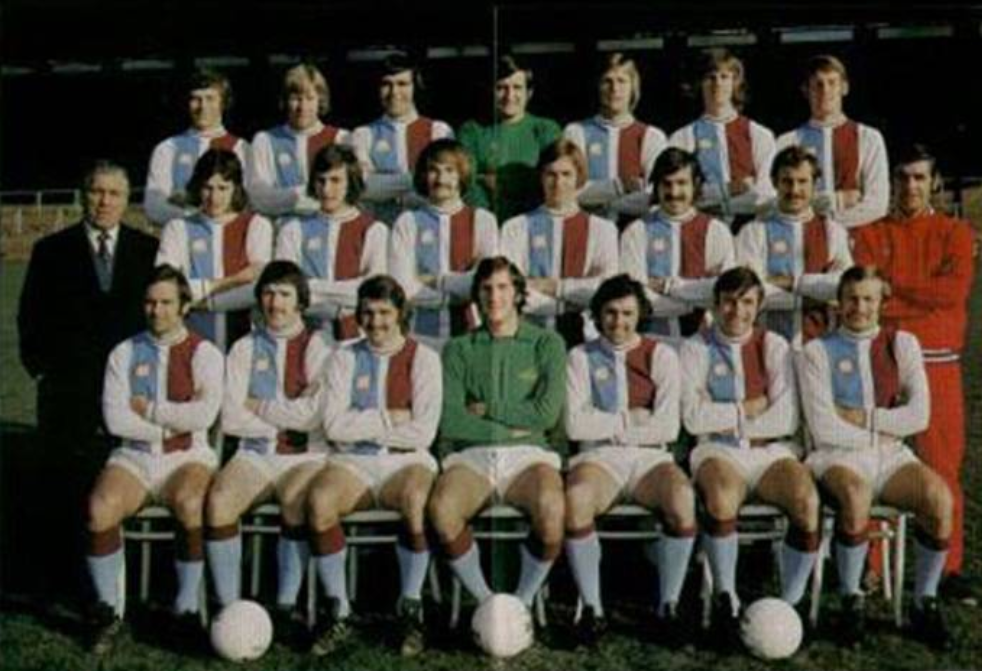
The 1969/70 started a new and historic chapter for Crystal Palace Football Club. The club reached for its first time ever the First Division, elite of English football. Under Bert Head, the club faced great challenges in its new division, due to the highest level of competition.
The club had a new purpose and built a squad mixing experienced players and rising stars, with key figures like John Sewell, who played over 200 games for Crystal Palace, Steve Kember, who played over 250 games for Crystal Palace and would eventually become the team’s manager, and John Jackson, an amazing goalkeeper who played almost 350 games for Crystal Palace.
In their debut season, the club struggled to keep up with the best clubs in English football. They finished the season in 20th place, just one point above the relegation zone.
The following season was also a challenge. The club tried to play well but ended up finishing in 18th place, a little better than its first season. Crystal Palace still participated in two more seasons in the First Division, but in the 1972/73 season, the club was relegated again to the Second Division after four seasons in the elite.
Malcolm Allison Revolution (1973 – 1979)
The club brought back former manager Malcolm Allison in 1973, following their relegation. Allison was tasked with rebuilding the team into a First Division contender.
The coach arrived, making big changes in the club’s identity. First, he modernized the kit and introduced the red and blue colors that are seen to this day. And he also put a new nickname for the team, being called “Glaziers,” he started calling them “Eagles”, inspired by Benfica, a Portuguese team.
Even with that, the club suffered on the field. Crystal Palace played badly and faced one relegation followed by the other, falling to the Third Division in 1974. However, the club had a period to be proud of, even with so many problems. Crystal Palace managed to reach the semi-finals of the 1975/76 FA Cup, where they managed to defeat great teams such as Leeds United, Chelsea, and Sunderland.
The club reached the semi-finals and lost 2-0 to the team that would become the champion, Southampton. The final was between Manchester United and Southampton, with the second team beating the Red Devils 1-0 at Wembley Stadium.
Return to the Second Division and Terry Venables (1976 – 1980)
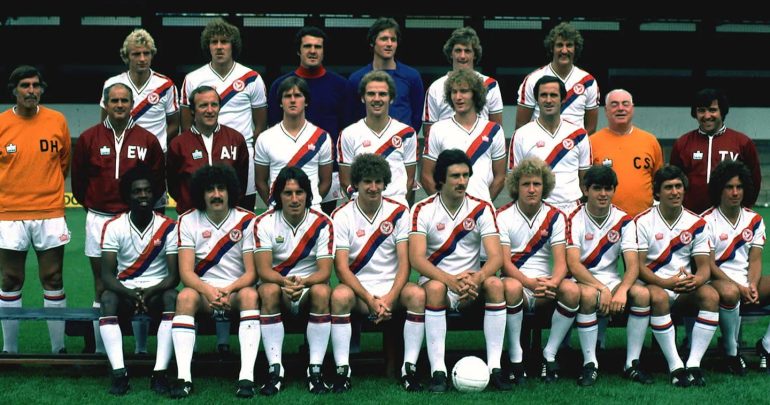
In the 1976/77 season, Terry Venables, also known as “El Tel”, was appointed as manager of Crystal Palace. The former English manager quickly made changes and led the team to a third-place finish in the Third Division, securing their promotion.
Just two years later, in the 1978/79 season, the club won the Second Division and was promoted again, now to the First Division. The club finished the Second Division only one point ahead of Brighton & Hove Albion.
Crystal Palace had high expectations, but they were relegated to the Second Division again in the 1980/81 season. The club had the worst campaign of all the teams, only managing 19 points in 42 games. This led Palace fans to believe that another period of instability was coming.
Financial Problems and Rebuilding (1980s and 1990s)
The 1980s were a challenging period for Crystal Palace FC, marked by financial instability, managerial issues, and disappointing results on the field. The departure of key players like Kenny Sansom to Arsenal further weakened the squad, and the club spent a significant portion of the decade in the Second Division.
In the early 1980s, the club struggled near the relegation zone and faced consistent threats of being demoted. However, the hiring of Steve Coppell in 1984 marked a turning point. The team’s performance improved, and they consistently competed for top positions, though they were not yet able to secure promotion back to the First Division.
Steve Coppell and Promotion to the Top Flight (1989)
The club concentrated on developing young players and making strategic signings as part of Steve Coppell’s rebuilding strategy. The team’s efforts paid off in the 1988/89 season when they finished third in the Second Division and secured a spot in the play-offs.
In the semi-finals, the club won 2-1 against Swindon Town in the aggregate score and qualified to the final. In the final, the club faced Blackburn Rovers and won the second game 3-0, after losing the first game 3-1. So, Palace secured their promotion to the First Division once again.
The team, led by amazing players like Ian Wright, Mark Bright, and Geoff Thomas, had a new and fresh energy that excited the fans and prepared the club to return to the top flight.
In their return to the top division, Crystal Palace had an immediate impact. The 1990/91 season was practically a perfect year for the club as they finished third, only behind Liverpool and the champion, Arsenal. This campaign was their best-ever finish in the First Division.
FA Cup Journey in 1990
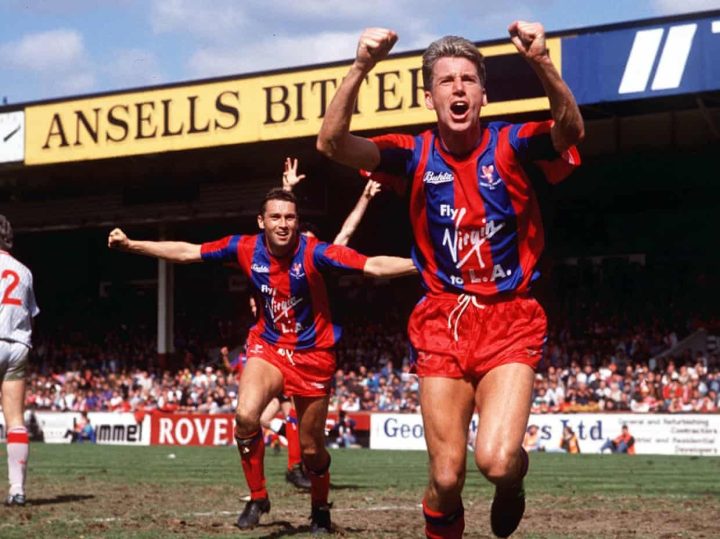
The 1989/90 FA Cup was the pinnacle of this era for the club. They built a reputation throughout the season with a surprising run to the final, including victories over teams like Portsmouth and Liverpool.
In the final at Wembley Stadium, the club faced Manchester United. After an amazing game and a 3-3 draw in the extra time, the replay happened five days later at Wembley Stadium again. The club lost the second leg 1-0, but the journey to the final was proof of their strength.
After the final and the end of the season, Palace was a team on the rise, with a dream to establish itself among the best in the country. However, the next seasons proved to be very difficult. The sale of Ian Wright to Arsenal in 1991 for two and a half million pounds was a significant setback for the team.
Despite some important players leaving the club, Palace remained competitive, but they would no longer be able to make seasons as good as the 1990 FA Cup final in the following years.
Decline and Financial Struggles (1992 – 1995)
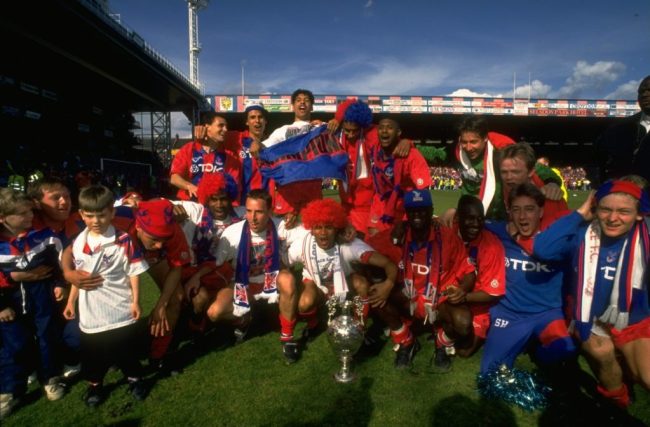
The early 1990s brought new financial issues for Crystal Palace FC, necessitating a restructuring process. The introduction of the Premier League in 1992 only intensified the competition, making it increasingly challenging for Crystal Palace to maintain their position in top-flight English football.
With poor financial management, instability with the coaches, and performances under expectations on the pitch, the club was relegated from the Premier League in the 1992/93 season. The first season of the Premier League in England.
So that you don’t get confused from now on, the Premier League has become the elite of English football. Already, the old First Division would become the second division in England, which, years later, would become the EFL Championship.
Survival in the 2000s
The 2000s were a decade of financial problems and uncertainty for Crystal Palace FC again. The club faced economic challenges that could end its existence. Following a great period in the 1990s, where the club played three times in the Premier League, Crystal Palace started the 2000s facing mounting debts and managerial instability, a recurring problem in the club’s history.
In the early 2000s, Crystal Palace faced significant financial difficulties alongside their efforts to maintain a competitive team. These financial problems and the resulting poor on-field performances led to their relegation to the EFL Championship in 2005, after only one season in the Premier League. Relegation is always a financial blow, but it was particularly harsh for Palace, which had experienced success just a few years prior.
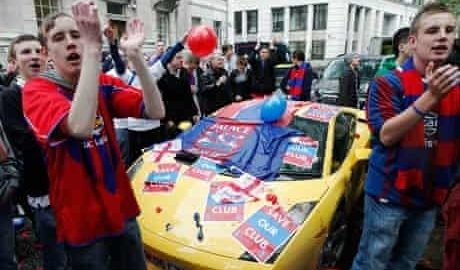
One of the most significant events in the club’s history came in 2010, when Crystal Palace was forced to enter administration. The club had struggled with debts accumulated during the late 1990s and early 2000s. So, the appointment of administrator Brendan Guilfoyle began to save the club from collapse.
With the help of its new ownership, the club was able to avoid liquidation and began a slow process of rebuilding its financial stability. The financial struggles of these years affected the ability of the club to hire players and compete at the highest level, and also left an impact on the club’s infrastructure.
However, the determination and commitment of the new club leadership helped Crystal Palace, at the end of the decade, have a better vision of the future, become more financially stabilized, and search for bigger dreams.
Modern Era: Stability and Growth (2010 – Present)
The 2010s and beyond were a new chapter of stability and prosperity for Crystal Palace FC, a huge contrast to the financial struggles that characterized the previous decades. Under the ownership of CPFC 2010, a group of supporters and investors, the club began a new journey into a promising future.
Ian Holloway’s appointment as manager in the 2012/13 season was crucial, as he steered the club back to the Premier League after an eight-year absence. The return to top-flight English football presented new challenges for the club.
Over the next decade, Crystal Palace established itself as a great club in the Premier League, often finishing mid-table, a great achievement after all its problems throughout its history.
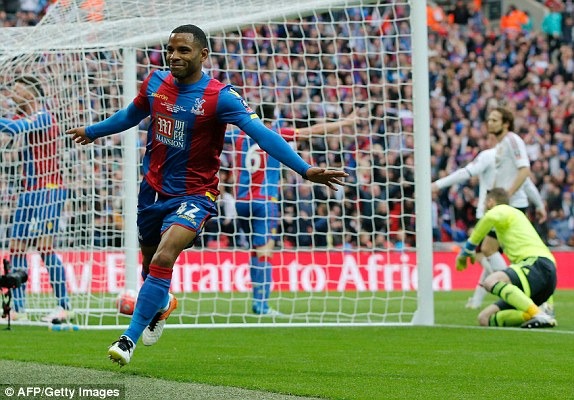
The appointment of Alan Pardew in 2015 was a moment of progress. With Pardew, Crystal Palace reached the 2015/16 FA Cup final against Manchester United. Crystal Palace lost the game to Manchester United 2-1, with the club opening the score at Wembley Stadium with almost 90,000 fans, but losing the game in extra time.
The goals were scored by Puncheon for Crystal Palace and Juan Mata and Jesse Lingard for Manchester United. Despite their loss, the club showed its fans that the club was growing and wishing for higher flights.
At the end of the 2010s, with Roy Hodgson becoming the manager in 2017, Crystal Palace solidified its position in the Premier League. Under Rodgson, the English manager organized the team and helped Crystal Palace avoid relegation year after year. He also had an important role in developing young players, ensuring the future of the club was in good hands.
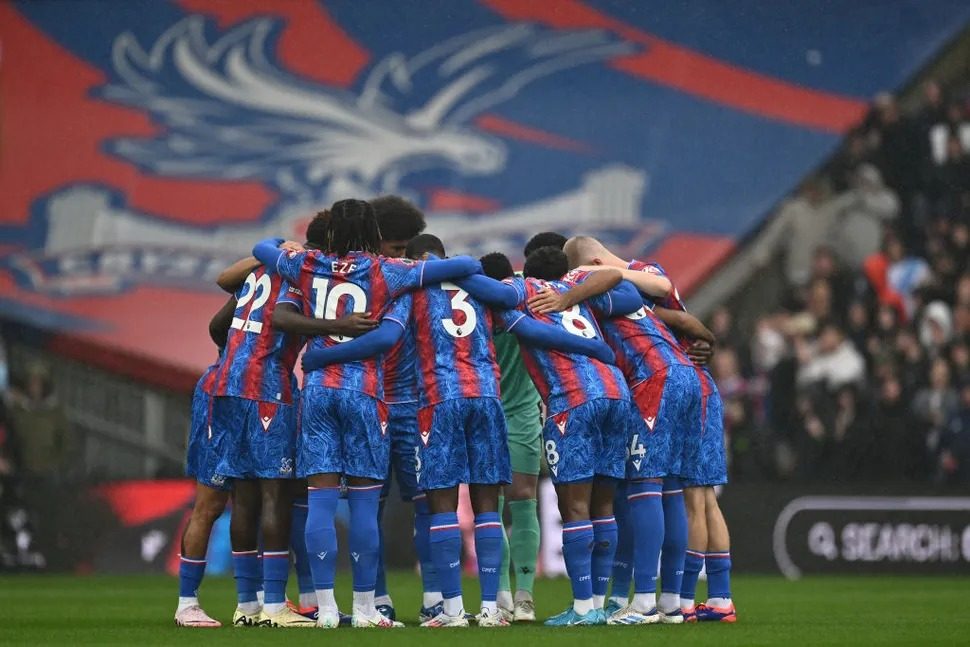
Off the pitch, Crystal Palace also focused on improving its infrastructure and getting closer to its community. The club made investments in its youth academy to produce new talents and ensure a sustainable future. The development of the Selhurst Stadium, even if slower than some fans wanted, it’s still the club’s fortress, and with plans to modernize the stadium and ensure a better experience for Eagles fans.
As the club moved into the 2020s, Crystal Palace continued to maintain its position in the Premier League, despite the challenges of competing in one of the most financially lucrative football leagues in the world.
Through their commitment, both the ownership and players, the club started a new connection with the fans and prepared them for a new chapter in the club’s history.
Legacy of Crystal Palace FC
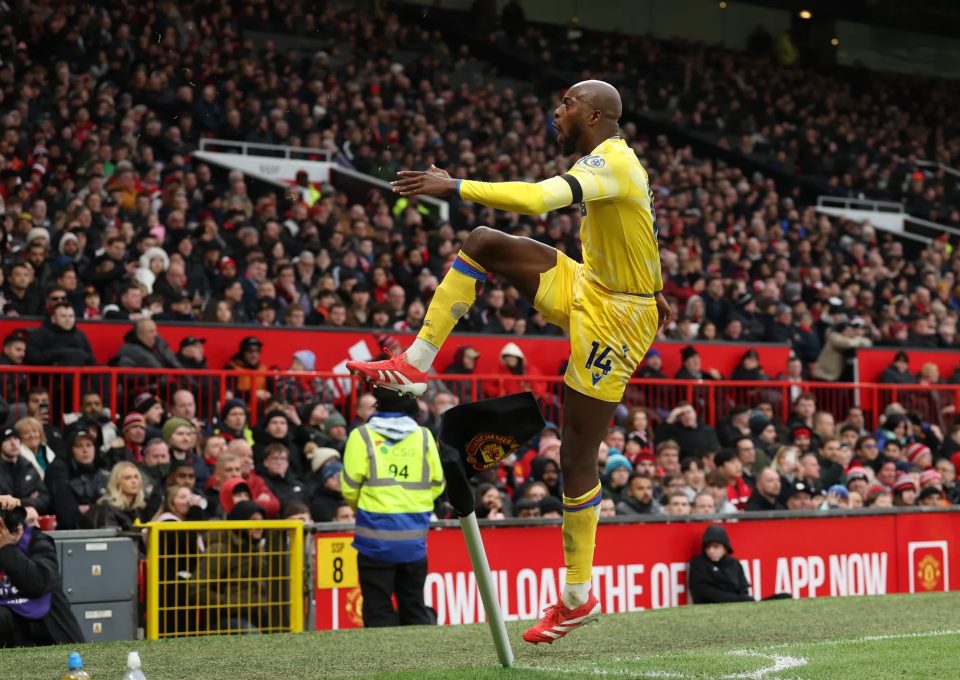
While Crystal Palace didn’t have the trophy room of some of their rivals, their legacy is built on a series of unforgettable moments, with huge players, legendary managers, and iconic matches that put the name of the club in the history of English football.
Crystal Palace represents the spirit of a club that faced multiple challenges in its history and managed to overcome all its problems. It is a club that faced adversity but never backed down. Whether they’re challenging for top-flight survival or achieving something special in domestic cup championships, the legacy of Crystal Palace FC is filled with pride, passion, and perseverance.
Overcome All Challenges with FootballTeam

If you’ve made it this far, chances are you’re a big football fan, right?
If you’re passionate about football and want to be the best player ever, I have good news: FootballTeam is the perfect game for you!
This game is your gateway to show off your football knowledge while building your dream team or stadium. Challenge friends and players globally in an immersive football experience like no other!
FootballTeam is available on desktop and mobile devices, ensuring a seamless experience wherever you are. Sign up now and play it for free!